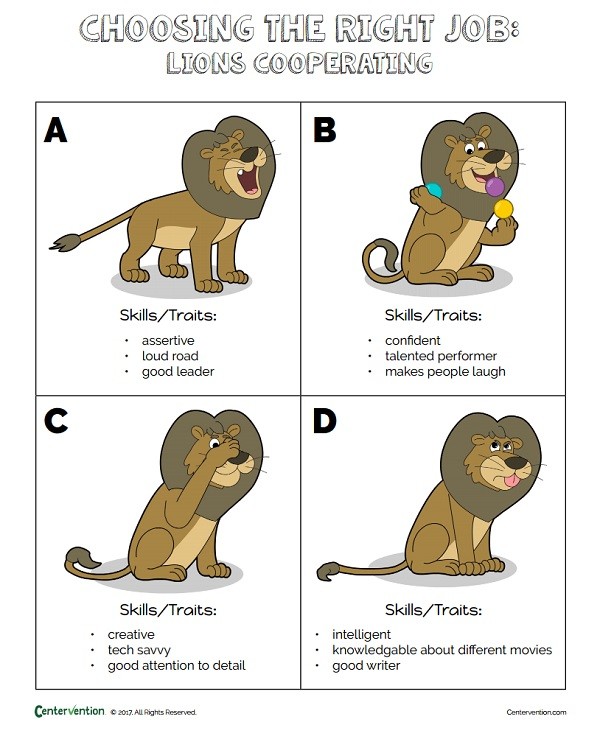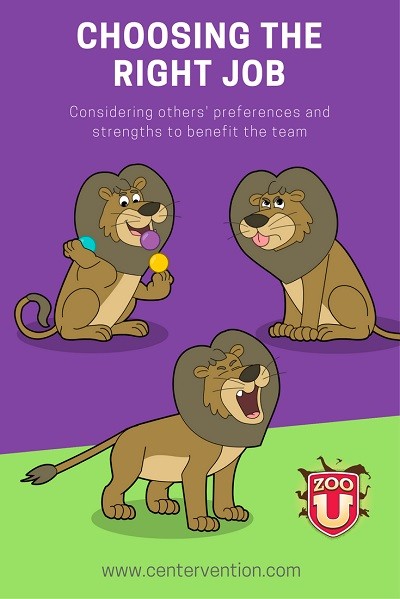On this page, you will find free social skills group activities that are appropriate for students in elementary and middle school.
In addition, you can find a broader selection of individual and social skills group activities here.
Note: Educators are free to use these activities with students via other platforms like Google Classroom as needed.
Social Skills Group Activities: Team Tasks
Students Will
- Listen to classmates’ preferences and strengths
- Compromise with classmates
- Troubleshoot to find the best solution
Materials
- Team task cards (in printable worksheet)
Pre-Discussion
- Are there any strengths you have that may be stronger than others? For example, are you the best at math, a sport, music, etc?
- What are some of your weaknesses or things in which you aren’t the strongest?
- Does everyone have the same strengths and weaknesses?
Activity Directions
- Split the students into even teams.
- Each member of the team must complete the task on a Team Task card.
- Students must work together to decide which student’s strengths would be best suited to complete which Team Task. For example, the student who is best at and/ or loves math would probably be best at the word problem task. A creative person who likes art should probably design the team logo. Someone who struggles with reading should probably not do the first Team Task.
- Students should focus on what’s best for the team, not what they personally WANT to do most. If someone is good at math and art and would prefer to do art, but another team member is only good at art, they need to compromise.
- Optional: To make the activity more challenging, tell students that all 8 tasks need to be completed. Some team members may need to do multiple tasks while others may only do one, depending on their strengths and ability to work quickly.
Post Discussion
Go over the following questions with the group:
- What are the benefits of working on a team?
- Were there any instances in which you had to compromise with a teammate?
- Did you overcome your team challenges? Why or why not?
- As you discuss these questions, help guide students to the idea that teams are the most successful when you work together to use each others’ strengths and make up for each others’ weaknesses.

Social Skills Group Activities: Learning to Compromise
Do you explicitly teach compromise in your classroom?
This worksheet help students compromise on activities to make sure everyone in the group is included and can enjoy the activity. Students will be presented with three different animals who want to play together, and three activities that they could choose. Students will need to identify which activity would be best for the whole group to enjoy together and explain why they picked that activity over the others.
For example, what activity could a bat, a bird, and a chameleon enjoy together? The bat and the bird would probably enjoy flying together, but that would leave the chameleon out. But they all could enjoy catching bugs!
With this activity, you can teach compromise and help foster a more inclusive classroom where students aren’t left out because they can’t do something or don’t like something.

Social Skills Group Activities: Teamwork
Cooperation games are a great way to teach teamwork and strategy. In this activity, students will practice their cooperation skills to make sure everyone “catches Lester,” or touches a ball, in the shortest amount of time possible.
Have you ever had a class that just could NOT get along? Whether it started at the beginning of the year and kept building, or there just seemed to be something in the air one week, having your kids at each other’s throats day after day makes it really hard to get any teaching done.
This cooperation game may be just the trick.
All you need is a ball, a timer, at least 5-6 kids, and a little patience. You don’t need a lot of space, so it can be done in a classroom, but what a great opportunity to get outside if you can!
The goal for this cooperation games is for students to come up with a way for every team member to “catch” or touch a ball that represents the Zoo U character Lester in the shortest amount of time possible. There are several ways that this can be accomplished, and the most successful ones involve teamwork and strategy.
Discussion questions will include:
- Were we more successful when we had a plan? Why?
- Was there anything that didn’t help the group?
- What strategy was the most successful in our goal of everyone “catching Lester” in the shortest amount of time? Why was it successful?
Having a clear strategy before we try something makes it more likely we will reach our goal. If the first strategy doesn’t work, it just means we need to brainstorm again and try a different strategy. When we work together and listen to each other’s ideas, we can come up with a plan to achieve greater success.
Students Will: Work together to create a strategies to reach a goal; Cooperate to apply these strategies
Materials: medium size ball (dodge-ball size), stopwatch (like on a smartphone)

Social Skills Group Activities: Cooperation
In this working together activity, students will practice their cooperation skills to keep a balloon in the air while holding hands.
Students Will: work together with classmates to achieve a goal
Materials: balloons
Directions:
- Split students into pairs and have them practice gently bouncing a balloon with their partner.
- When students have had sufficient practice, have your entire group form a circle and hold hands.
- Explain that the goal of the activity is to see how many times the group can bounce the balloon to keep it in the air without dropping hands. To achieve this goal, the group must move and work cooperatively with each other.
- Players can pass the balloon with any part of their bodies except for their feet.
- If the balloon touches the ground, or students drop their hands, the count must start over. 6. Allow the group several repetitions before starting the discussion.
Discussion:
Go over the following questions with the group:
- What was the experience of keeping the balloon in the air like when you worked with a partner vs. when the whole group was working together?
- What skills did group members have to use to keep the balloon in the air? What didn’t help the group?
- Were we able to achieve our group goal? What was our highest count? Were we more successful the longer we did the activity?
As you discuss these questions, help guide students to the idea that when we work together, we will achieve greater success.

This Cooperation Skills activity is a good way to teach students how to work together to solve a problem.
Students, working in pairs, will be given two halves of the same drawing. They will need to use good communication and cooperation skills to describe their part of the drawing to their partner. In the end, each partner should end up with the same drawing.
Students will discuss what it’s like working with a partner who they can’t trust to do the work vs. what it’s like to work with a partner they enjoy working with and can trust completely to do the work.
The concept of this activity is similar to the board game battleship. You set up your ships on your board, and your opponent sets up his, but partitions block you from seeing each other’s. While the goal of the game is to sink each other’s ships, it still requires communication skills as well as trust in your partner. If you don’t trust that your partner is playing in good faith, you can’t trust that he is telling the truth about the location of his ships. And if you don’t have good communication skills, neither of you will progress very far in the game.
The same goes for this activity. You need to trust your partner that he can communicate accurate and clear instructions to you on how to complete your part of the drawing, and you need to work hard to do the same for your partner.
It can be hard to teach students how to cooperate because it seems like such an abstract skill. But this activity can help students build their cooperation skills and the necessary communication skills needed to support them.

Social Skills Group Activities: Working Together
Each social and emotional skill in Zoo U is represented by an animal. We chose lions to represent Cooperation because of the way lions work together to hunt large prey. Each lion has a special job during the hunt that they train for from the time they’re cubs; and, the hunt is most successful when each lion can perform her special job that matches her skills.
In this teamwork activity, students are told that they are making a movie, and they need to assign the roles of actor, director, camera operator and film critic to four different lions. The worksheet has pictures of each lion and lists their unique skills, and students must choose which lion’s skills best fit each role.

This activity is a great opportunity to discuss with students the idea that we all have special skills or character traits to offer to the group, and we’re all most successful when we use our strongest skills to help our team.
